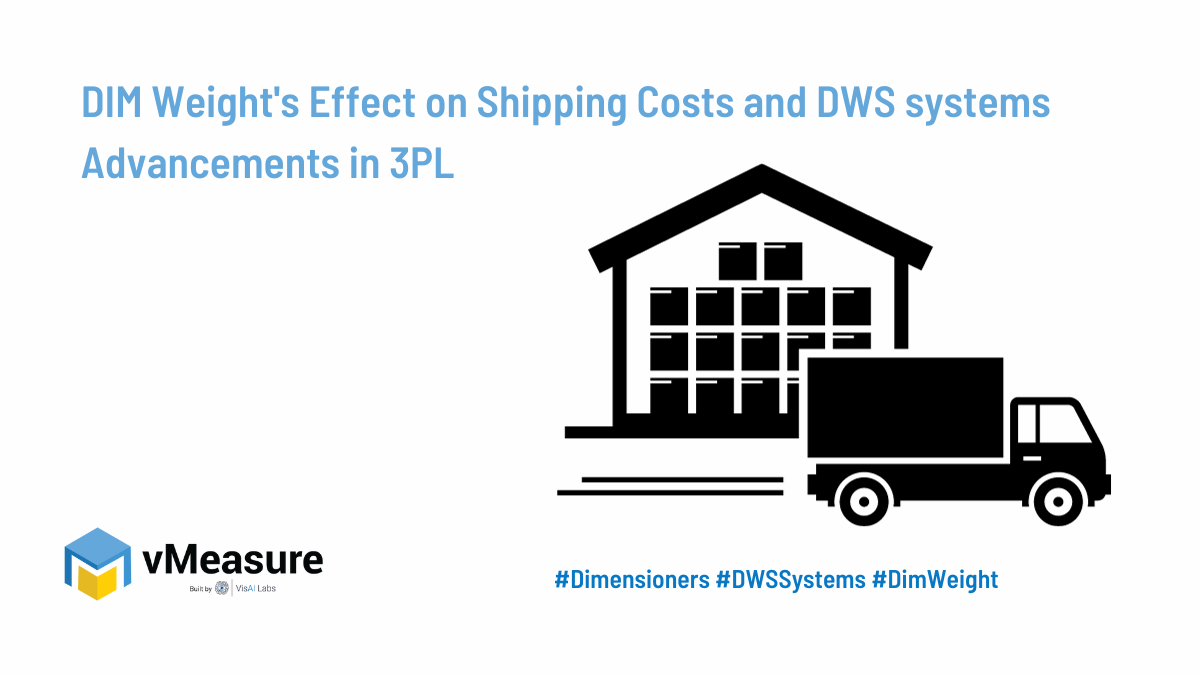Introduction
Picture this: One company wants to send a big box of light, fluffy toys across the country. The box is huge but hardly weighs anything. Another company has a small, heavy box filled with metal figures. It’s a lot smaller but weighs as much as the big box of toys. Usually, shipping is all about how much something weighs, so normally, both boxes would cost the same to send even though one is much bigger.
But there’s a smarter way to figure out shipping costs that’s changing the game, especially for businesses that handle shipping for others. It’s called Dimensional (DIM) Weight.
This guide will show you how DIM weight makes shipping prices fairer by considering how big and heavy a package is. We’ll also show you how DWS systems are making sure that shipping companies charge the right price for every kind of package, making the most of the space they have in trucks and planes.
Demystifying DIM Weight in Shipping
Dimensional weight, also known as volumetric weight, is a pricing technique for commercial freight transport that uses an estimated weight calculated from the length, width, and height of a package. In essence, the DIM weight reflects the density of a package—the amount of space it occupies about its actual weight.
The formula for calculating dimensional weight is simple:
DIM weight = Length × Width × Height / Dimensional weight factor
But why does this matter? The introduction of Dimensional weight has been a pivotal shift in the logistics sector. It ensures that companies are charged more accurately for the space their goods occupy during transport. This change has been particularly impactful in the 3PL industry, where optimizing shipping costs and maximizing vehicle capacity are central to profitability.
Dimensioner: Revolutionizing Dimensional Weight Calculation:
Enter DWS systems: a sophisticated dimensioning tool designed to measure the package dimensions quickly and accurately. These DWS systems use various technologies, such as computer vision scanning, to capture a parcel’s exact size, no matter its shape, ensuring that Dimensional weight is calculated with precision.
Dimensioners have become friendly tools across various industries, from warehousing to distribution, for several reasons:
- Accuracy: They provide exact package measurements, reducing human error.
- Efficiency: Dimensioning of parcel happens in real time, speeding up the logistics process.
- Cost Savings: Accurate DIM data helps firms avoid overpaying for space their shipments do not use.
- Data Analysis: They allow for better analysis of shipping data, leading to more informed logistic cost management and freight pricing strategies.
As businesses send out an increasing variety of parcel shapes and sizes, traditional measuring tools fall short. Dimensioners can handle irregular shapes effortlessly, proving to be indispensable for accurate DIM weight shipping calculations.
The Direct Impact of DIM Weight on 3PL Shipping Economics
Switching to dimensional weight pricing was a big change for 3PL providers. They had to rework their pricing plans and rethink how they charge for shipping to account for both packages size and weight.
Key points include:
- The shift was not just a new formula but a complete economic restructuring.
- Freight pricing strategies were revised to factor in DIM weight.
- The cargo’s physical space became a crucial element in pricing, alongside its actual weight.
- Logistic cost management adopted precision in shipping cost calculations for profitability.
- Providers now weigh the cost-effectiveness of transporting larger, lighter items versus smaller, heavier ones.
- DIM weight ensures fair charging for space, promoting the efficient use of cargo space.
Leveraging Dimensioning Technology for 3PL Cost Optimization
For shipping companies that handle shipments for others, each bit of space in their trucks or planes could mean more money made. But it’s tough to make the most of this space without the right tech. Here’s how DWS system is a game-changer:
- It measures packages DIMS and weight data accurately, helping to pack vehicles tightly and avoid wasted space.
- This tech also helps companies pack their products better. With good package measurements, they can use less material and still protect their stuff.
- Smarter packaging cuts down on costs and is better for the planet because it uses fewer resources.
Freight Pricing Strategies and Dimensioning Systems:
The integration of dimensioners has catalysed a transformation in freight pricing strategies, providing a wealth of package data that shapes more equitable and resource-reflective pricing models.
Essential considerations stemming from this shift include:
- Carriers leveraging package DIMs and weight data to craft pricing models that accurately reflect the true transportation cost.
- The necessity for 3PL providers to incorporate dimensional weight into their pricing strategies to remain compliant and competitive.
- The advantage for 3PL providers using dimensioners to offer precise volumetric weight quotes, setting them apart from competitors who may not have such precision in their pricing.
- The strategic benefit of precision in pricing, which can act as a unique selling proposition for 3PL providers, potentially leading to increased market share.
Parcel Shipping Costs: The Dimensioning System Advantage
DWS systems are crucial tools for keeping shipping costs fair. They give exact package measurements that make sure shipping companies, and their customers don’t pay too much for the space their packages take up.
Below are some of the other reasons they hold such significance:
- The Dimensioner measure how big a package is, so that shipping companies don’t charge more than they should.
- With these exact package measurements, shipping companies can negotiate for better prices from those who carry their packages because they know exactly how much space is being used.
- It’s important to know that different carriers might calculate package size differently, and DWS systems help understand these differences.
- By comparing carriers, shipping companies can always choose the cheapest option, helping them stay competitive and keep costs down for themselves and their customers.
Advanced Logistic Cost Management with Dimensioning Systems
Leveraging dimensioning systems aids shipping companies manage costs better by giving them a detailed look at where they might be spending too much.
Here’s a quick rundown of the benefits:
- Shipping companies can use the package data to spot patterns and see if they’re wasting money, like sending out packages that are big but not heavy.
- They can figure out if changing the packaging could help use space better.
- These dimensioners work well with other WMS, TMS and shipping software.
- When everything works together, dimensioners helps figure out shipping costs and billing with less chance of mistakes.
- This means billing is more accurate, there are fewer to zero negotiations over charges, and the company saves money overall.
Shipping Cost Analysis Enhanced by Dimensioning Systems
Shipping cost analysis is crucial for 3PL providers. Dimensioning systems supply essential DIM weight data for analysis.
Accurate package data allows for:
- Evaluation of packaging designs for potential cost reductions.
- Consolidation of shipments to maximize efficiency.
- Renegotiation of carrier rates based on precise dimensions.
Companies have realized substantial savings, sometimes in the millions, by effectively managing DIM weight, with dimensioners providing the crucial data for the informed decisions that lead to these financial efficiencies.
Industry Trends: The Future of Dimensioning Systems in 3PL
Looking ahead, the dimensioners that measure package sizes are going to become super important for shipping companies. Since more people are shopping online, there’s going to be all sorts of different packages to send off. These dimensioners must get better and better—faster, more on point, and working smoothly with other shipping programs.
We might see some cool upgrades, like better 3D scanning and smart computer programs that can think like us to figure things out. All this tech is going to make it easier to work out shipping costs and keep shipping companies good at what they do, which is moving our stuff from here to there without costing too much.
Conclusion:
The adoption of DWS systems has significantly improved the 3PL industry by ensuring fair shipping cost and efficient logistics management. These dimensioners facilitate cost savings, accurate billing, and better negotiations with carriers. As the industry progresses towards data-driven operations, DWS systems have become essential for 3PL providers to maintain competitiveness and optimize space utilization. Embracing this dimensioning technology is crucial for adapting to future market demands and leading in the logistics sector. The future of 3PL is shaped by DWS systems, promising a more efficient and adaptable industry.


